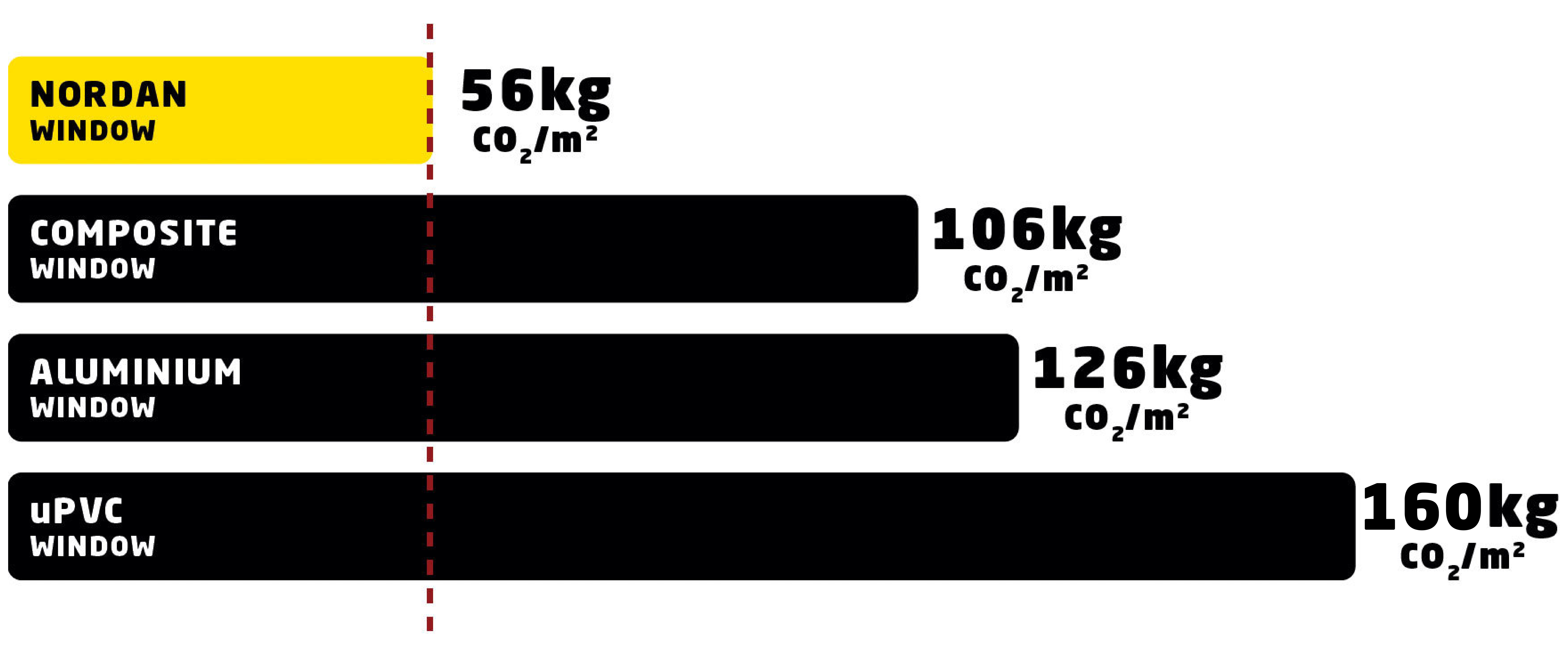
Specifying windows & doors in a climate emergency: My CPD
By Tom O'Sullivan, Technical Specification Advisor at NorDan UK...
A key part of my job involves helping construction decision makers navigate building standards which increasingly prioritise the reduction of whole life carbon.
Reflecting on these recurring themes, I’ve recently contributed to a Continuing Professional Development (CPD) presentation that brings key information on building materials, carbon and standards together under one roof.
The UK construction industry needs to reduce its carbon emissions by 7-8% per annum and the UK government has taken steps towards achieving this figure with the recent changes to Part L of the Building Regulations and the proposed Future Homes and Buildings Standard.
The changes introduced in June 2022 have reduced window U-value targets from 1.6 W/m2K to 1.2 W/m2K in the building regulations and these changes should see new homes produce 31% less operational carbon.
The Future Buildings Standard, which will come into force in England and Wales in 2025, aims to reduce total building carbon emissions by up to 80%. This will require u-values of 0.8 W/m2K with triple glazing for all new homes across the UK.
NorDan windows and doors can achieve U-values of 1.2 W/m2K with double-glazed units and U-values as 0.65 W/m2K when triple glazed. This means that the Part L targets can be achieved with double-glazed units and Passivhaus performance can be achieved with triple-glazed units.
The changing U-values are reflective of a culture that has so far focused heavily on operational carbon and building energy efficiency.
Operational carbon focuses on efficiency over 60+ years, but we can’t rely on planting trees for carbon offsetting or using high-performance products, if the products we create and buildings we construct are having a negative impact on the environment now.
This is why embodied carbon (the emissions produced as a result of manufacturing and construction) is so important, and by focusing on embodied carbon we can achieve the benefits now, which is when we need them.
Embodied carbon accounts for half of the construction industry’s emissions and this will rise with increasing operational efficiency and less reliance on fossil fuels. Embodied carbon has yet to be regulated in the UK however that looks set to change with the proposed Part Z Carbon Emissions Bill.
Part Z seeks to introduce embodied carbon regulation and will focus on the initial environmental impact of manufacturing and construction instead of focusing solely on long-term energy efficiency.
Products will need to be made from sustainably sourced materials and have low carbon manufacturing and transport processes. Manufacturers’ data will be crucial for architects, clients and contractors for making informed decisions based on the carbon impact of their construction projects, and the products and processes they use.
To illustrate this, below is an embodied carbon analysis that lists the initial environmental impact to manufacture and package some of the most commonly specified windows.
These figures are for triple-glazed windows and the figures are rather interesting:

NorDan’s new Carbon CPD presentation looks at the above topics in detail with I’m happy to deliver via Teams or Zoom, or face-to-face.
I’m Tom O'Sullivan, Technical Specification Advisor at NorDan UK Ltd. To find out more about my CPD and to organise a presentation, please email me at: Tom O'Sullivan, or call me on 07557 309 363.
Sep 29, 2022
Go back